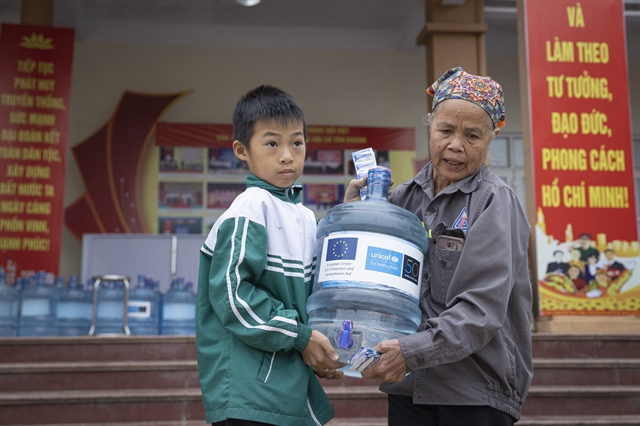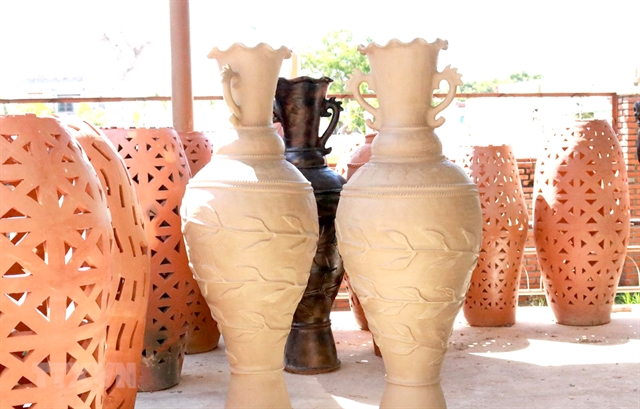 Society
Society

Craft villages in the south-central province of Ninh Thuận are producing more high-quality products to meet demand and ensure sustainable development.

|
| Pottery products made at Bàu Trúc Pottery Village in Ninh Thuận Province’s Ninh Phước District. — VNA/VNS Photo Nguyễn Thành |
NINH THUẬN — Craft villages in the south-central province of Ninh Thuận are producing more high-quality products to meet demand and ensure sustainable development.
The Bàu Trúc Pottery Village in Ninh Phước District, established by ethnic Chăm more than 500 years ago, is making more high-value pottery products like decorative house products and fine art products.
In previous years, the village, which produces pottery by hand, made mostly low-value pottery for household use that could not compete with machine-made products.
To save the village’s production, artisans have created new types of products that meet the demand of customers and have high value.
Phú Hữu Minh Thuần, director of the Bàu Trúc Pottery Village Co-operative, said the traditional pottery craft should be preserved but updated.
“The village’s artisans have created products that combine characteristics of western and Vietnamese culture in Chăm pottery to improve product design and quality,” he said.
The co-operative is making new products like decorative lamps, decorative water pots, and feng shui products and flower pots with various designs to provide to resorts and for household decoration.
The new products are sold at higher prices compared to traditional pottery for household use.
The co-operative’s feng shui products, for instance, are priced between VNĐ1.2-3.5 million (US$50-150) per item.
The co-operative plans to expand production of the new products for export.
In the Mỹ Nghiệp Brocade Weaving Village in Ninh Phước District, brocade weaving households have improved product quality and designs of brocade clothes, handbags, wallets and backpacks.
Mỹ Nghiệp uses electronic stamps to trace origin for its products sold to provinces and cities in the country and exported.
With more diverse products, the income of households in Mỹ Nghiệp has improved.
The village has one co-operative and 22 establishments with a total of 500 households that weave brocade and make products from brocade.
The co-operative and establishments, which have total annual revenue of VNĐ15 billion ($650,000), have created jobs for 800 locals.
The province has three recognised traditional craft villages – Bàu Trúc, Mỹ Nghiệp and Chung Mỹ Brocade Weaving Village.
It also has dozens of craft villages that produce the province’s specially identified local products like grape wine, dried jujubes, dried bamboo shoots, dried banana, processed seafood and fish sauce.
However, the development of the craft villages has not matched the province’s potential since handmade products take time to produce and production efficiency is low.
In addition, the products of most craft villages have simple designs and lack a brand name to compete with the same kind of products produced by factories.
Trần Quốc Sanh, deputy director of the province’s Department of Industry and Trade, said, to save the village, it would invest in infrastructure, zone material input sources for production, apply advanced technologies and train human resources.
The province also holds trade promotion activities that help expand markets, he said. It also plans to have one to two craft villages officially recognised this year.
The province has spent nearly VNĐ3 billion ($130,000) to support the development of craft villages. The money has been used to buy machines and advanced technologies, protect the environment, build websites for craft villages, and promote handicraft products to modern distribution channels and shops.
The province also has preferential policies to help craft villages develop brand names, participate in fairs at home and abroad to expand markets, and develop craft villages in combination with tourism services. — VNS




.jpg)